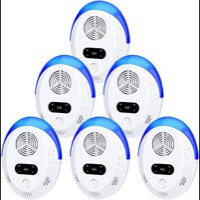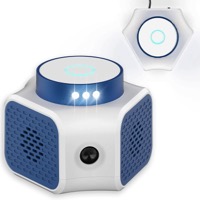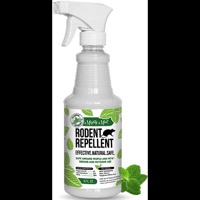Mice Repellents
How to get rid of Mice

By Jess Simmonds, Expert Reviewer for Repellent Guide
published: Feb 05, 2018 | updated: Feb 08, 2018
Mice can be a house hold pest though normally less of an aggresive problem than rats. Mice are less destructive to wiring, pipes and food stores but a pest never the less. The first sign you make see of mice infestation is likely to be chewing on food packets and small mouse dropping in cupboards.
Why are mice a problem?
Though they lack the bad reputuation of rats - actually mice carry many of the same diseases as their larger relatives.
Diseases
Mice can carry some serious diseases and can spread them to humans in some cases through the feces, urine and saliva they leave behind.
- Hantavirus Pulmonary Syndrome or HPS is spread though mouse urine, droppings and saliva, and is a potentially fatal disease.
- Salmonella can be passed to humans when mouse droppings contaminate food. Your household pets are also at risk.
- Leptospirosis can be passed to humans through bites or when mouse urine enters broken skin. Leptospirosis can cause both liver and kidney damage.
- Tapeworms can be passed to humans through contaminated food.
- Murine Typhus caused by the bacteria Rickettsia typhi can be transmitted to humans via a mouse flea bite.
Be aware that mice may contaminate your food supplies with feces and urine, look out for signs of damage to food packaging and throw away any potentially contaminated food.
Property Damage
Mice breed quickly (five to ten times per year) and love to make their nests in warm, enclosed spaces, such as in the wood work of a home or other structured dwelling. It’s important to keep mice from nesting and inhabiting an area as they will soon overrun any area they inhabit and cause an infestation. The first signs of a mouse infestation are commonly gnawing on food packaging and small feces in cupboards, you may also see chewing of electical wiring, pipes, and woodwork.
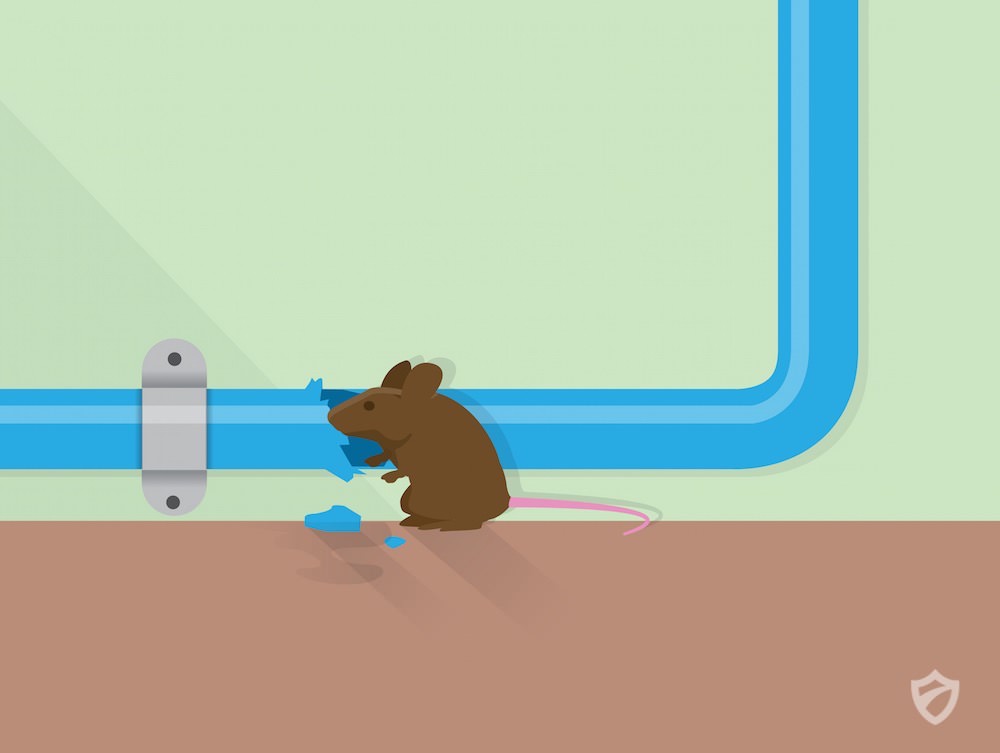
The common house mouse is in the list of top one hundred invasive species.
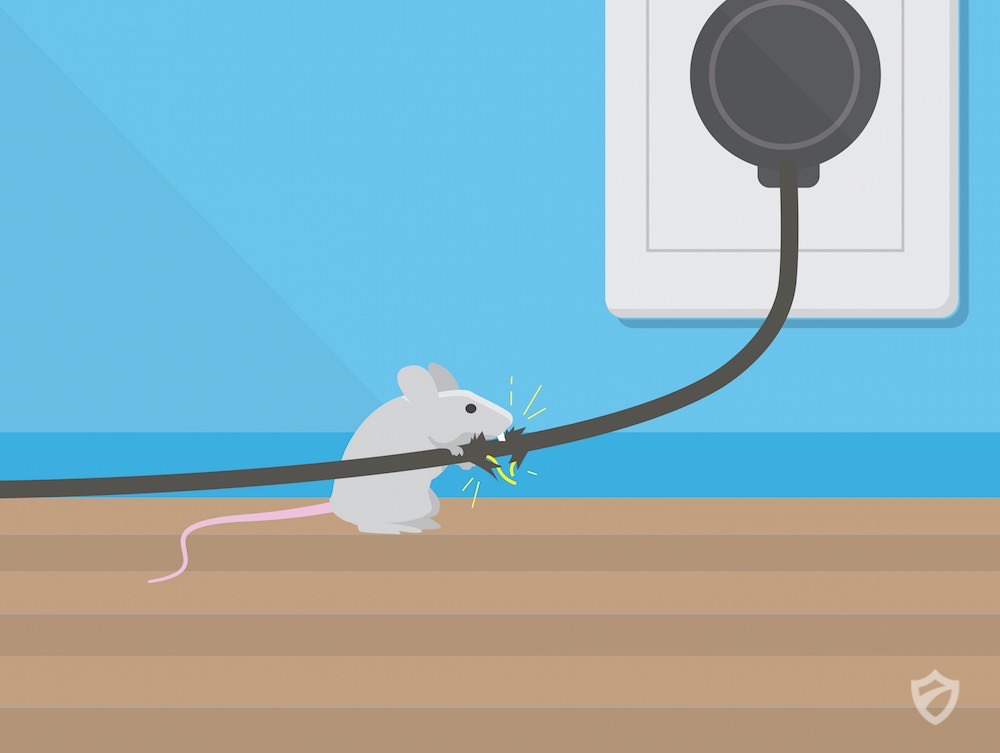
Getting Rid of Mice
The first steps in erradicating your mouse infestation should be:
Remove all food sources
If mice have access to your trash or food in your kitchen they will always find a way to get back for more easy pickings. Make sure that all food in your kitchen is secured in plastic containers and also maintain a clean kitchen with no food scraps laying around.
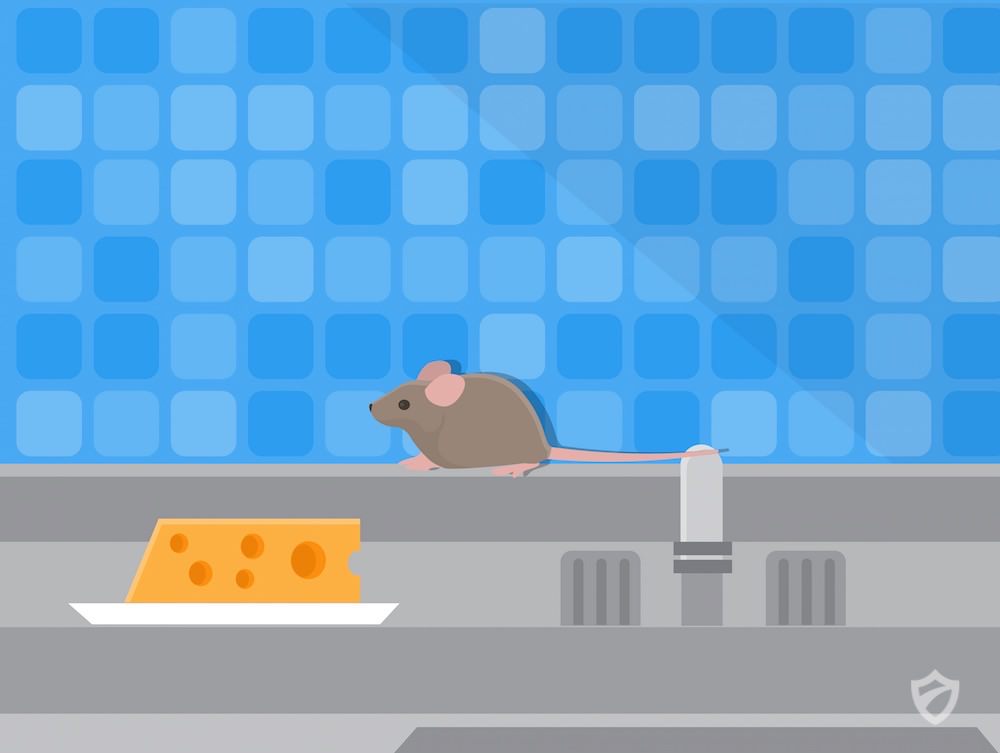 Ensure your food waste is secured in the trash / rubbish bins - this may mean buying a more robust waste bin. Also move waste bins as far from your property as possible. If you have a bird feeder - again make sure you clean the ground under it and if possible position it away from your home.
Ensure your food waste is secured in the trash / rubbish bins - this may mean buying a more robust waste bin. Also move waste bins as far from your property as possible. If you have a bird feeder - again make sure you clean the ground under it and if possible position it away from your home.
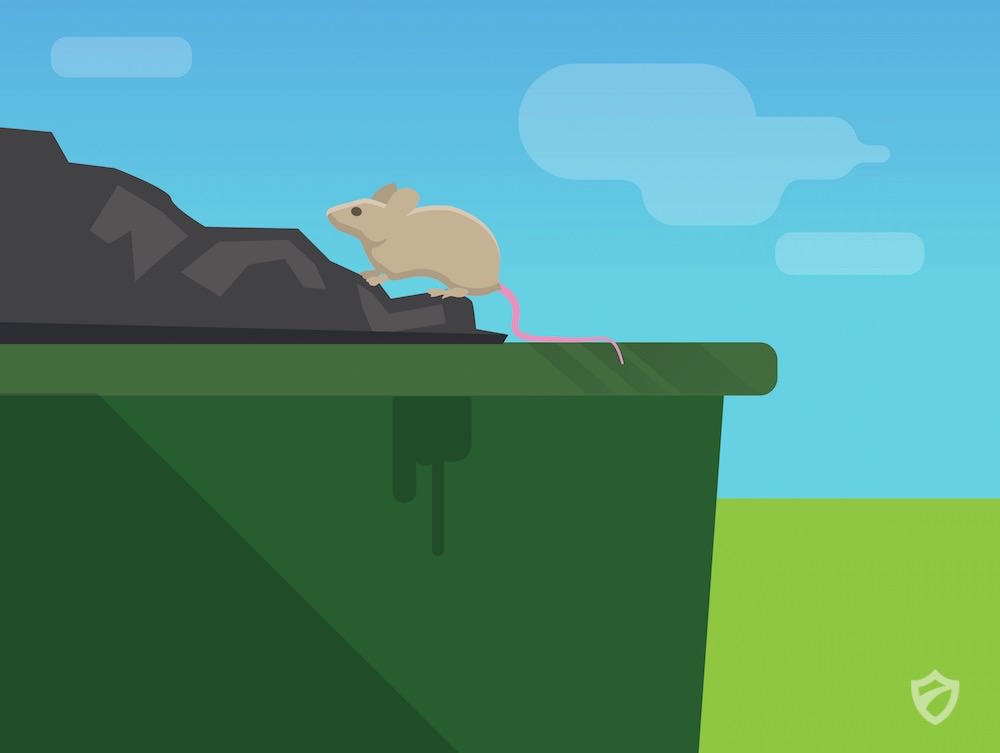
Block all access holes
This is most important - look for any access holes into your property and block them with mesh wire and a builders filler putty. Mice can squeeze through suprisingly small holes - make sure you block any hole larger than 1/4 inch. Blocking access is essential to keeping rats away.

Repellents, Poisons and Traps
Once you have removed food sources and blocked all access holes on your property, you may consider using repellents, poisons and traps to remove the infestation.
Repellents
Be aware that the effectiveness of repellents will depend on proper usage and your particular situation. If you have an existing infestation then you have mice that already consider your property as their home. For them to leave and stay away you need to make your home extremely unattractive for them. Slightly unpleasant scents and irrating sounds often won't be enough to make them look for a home else where. You need to really make their stay unwelcome!
Ultrasonic Repellers
Another humane approach to discourage mice from occupying a certain area or to chase them out of a current one is to use an electronic mouse repellent device. These ultrasonic repellers use a high decibel ultrasonic signal that mice find disturbing but the ultrasonic sound is inaudible to us humans. Be aware that they won't work overnight - you will need some patience and to wait at least 3-4 weeks before deciding if they have been effective. If the mice have a current litter of babies then they won't leave until the litter is ready to move - this could take a month. Mice actually use ultrasonic sounds to communicate which is why they can be sensitive to these repellers.
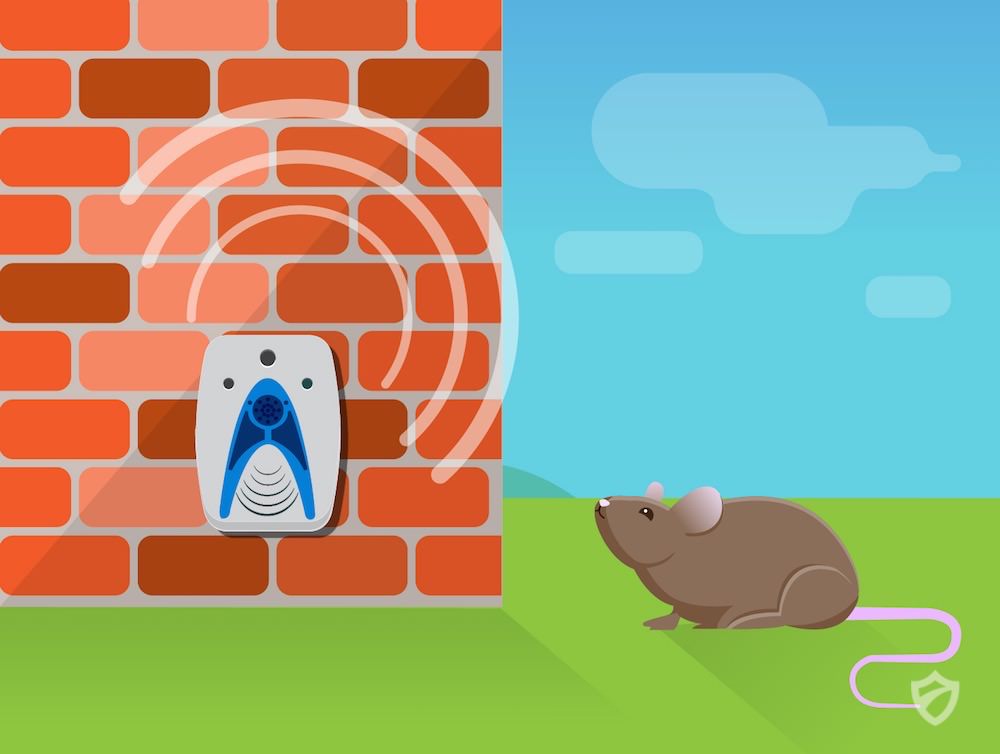
Scent Based Repellers
There are some natural scents that can be unpleasant to mice - but be aware you would need to apply the scents in copious amounts right where the mice are nesting. Mice won't mind hanging around in these scented areas unless it's right where they nest. There are both some home grown methods and commercial scent based repellers.
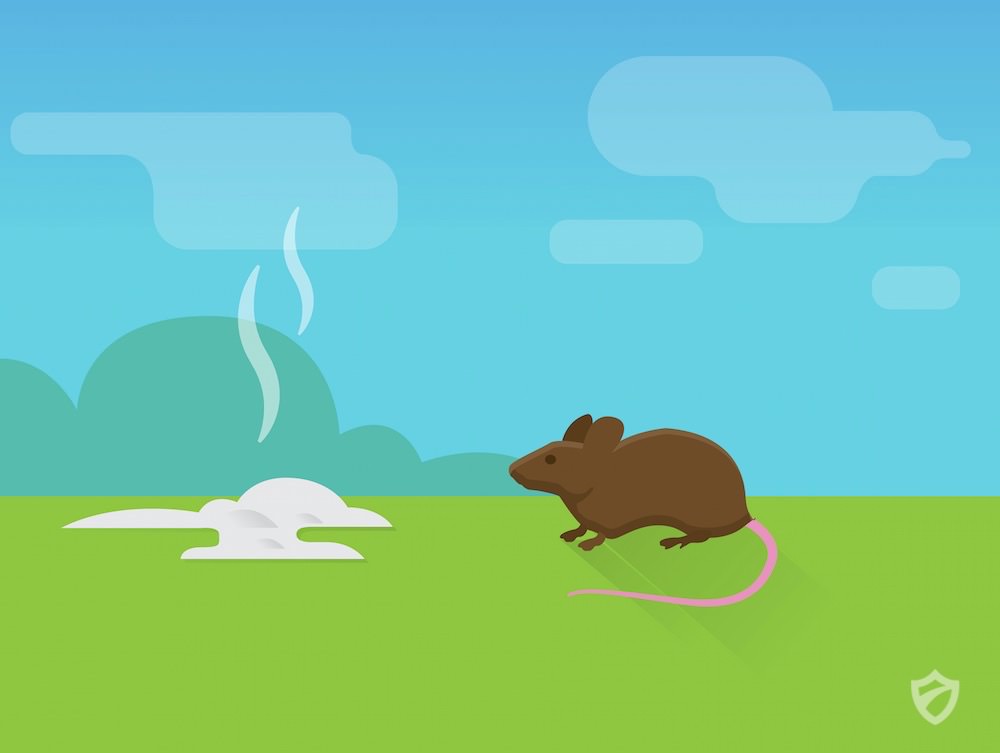
Peppermint Oil
Not pepper mint leaves - but a concentrated pepper oil. Soak cotton balls or old rags in peppermint oil and place them right where the rats are nesting or frequenting. Make sure the smell is pugent - a slight smell won't be enough to put off a mouse.
Ammonia
Soak rags in pure ammonia and place them right where that mice are nesting, repeat at least once per week as the ammonia smell will fade quickly.
Mouse Poison
We've all heard of it and some of us have tried it - yes mouse poison works to get rid of mice. But what's the downside?
- Often the mouse will die in your house - in a wall, under floor boards or in your attic. Often in places you cannot access - and then you will suffer the stench of a rotting carcass for weeks or even months to come.
- And if the mouse dies in an accessible area? what if your pet dog or cat decides to have a chew on the fresh carcass - you run the risk of losing your pet to the poison too!
- Lastly what if your pet or even child finds the mouse poison? the results are unthinkable.
Mouse Traps
Ok so mouse traps seem like a safer way to rid your home of mice, they are but there are some points to consider.
- If the trap is a cage type that doesn't harm the mouse then you will need to release the mouse a good distance from your home in a wooded area. They may have a chance of survival, though life away from houses is much tougher for the house mouse! The typical life span of a house mouse outside is one year compared to 3 years indoors.
- Make sure you wear thick gloves when handling a mouse (even if it's a dead one).
Types of Trap
There are several types of trap.
Traditional spring traps that break the mouse neck with a sprung mechanism.
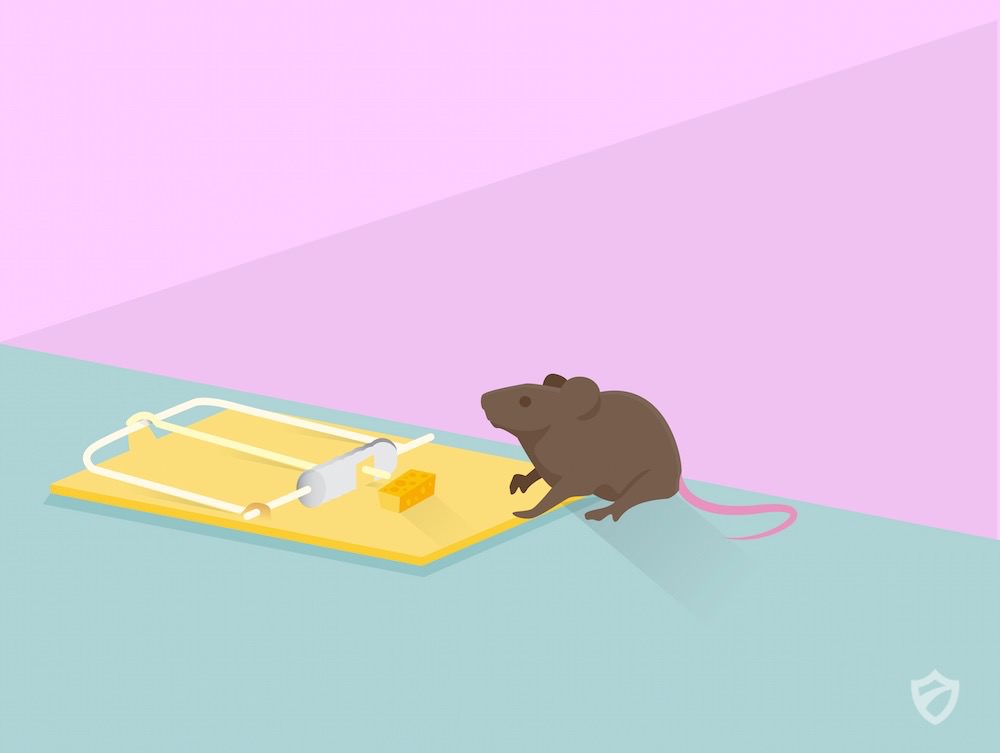
Cage traps do not kill the mouse and in that sense they are humane. However you will need to release the mouse far from your home - and with out the protection of a house their life span will be dramatically shortened.
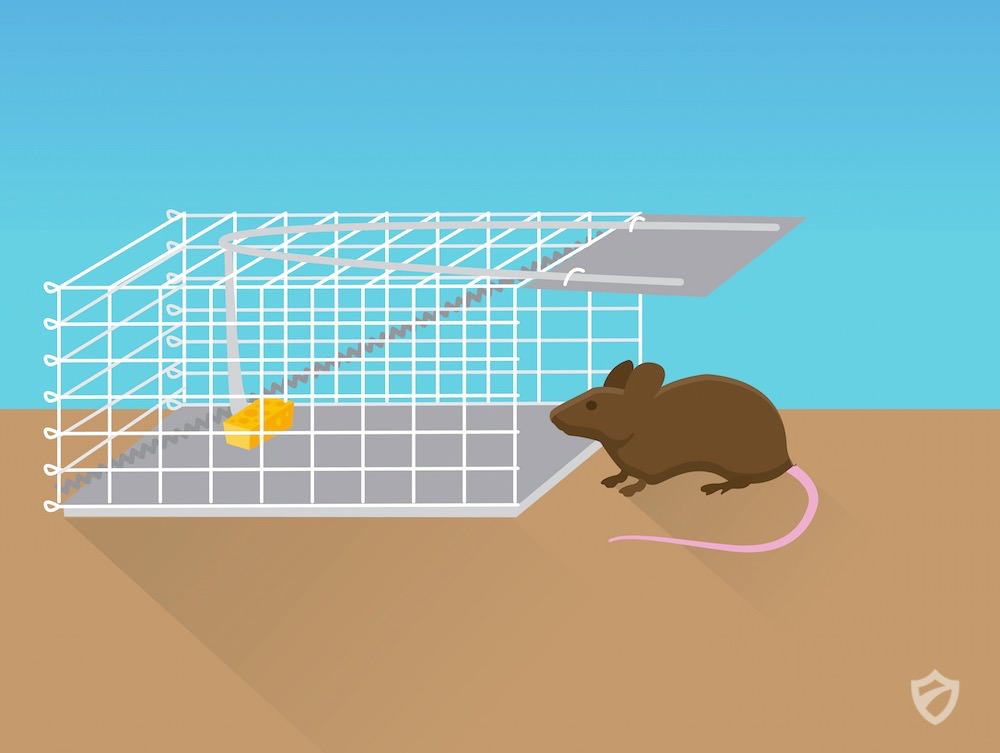
Electrocution traps - these run off a mains supply and apply a fatal shock to the mouse as it enters the trap.
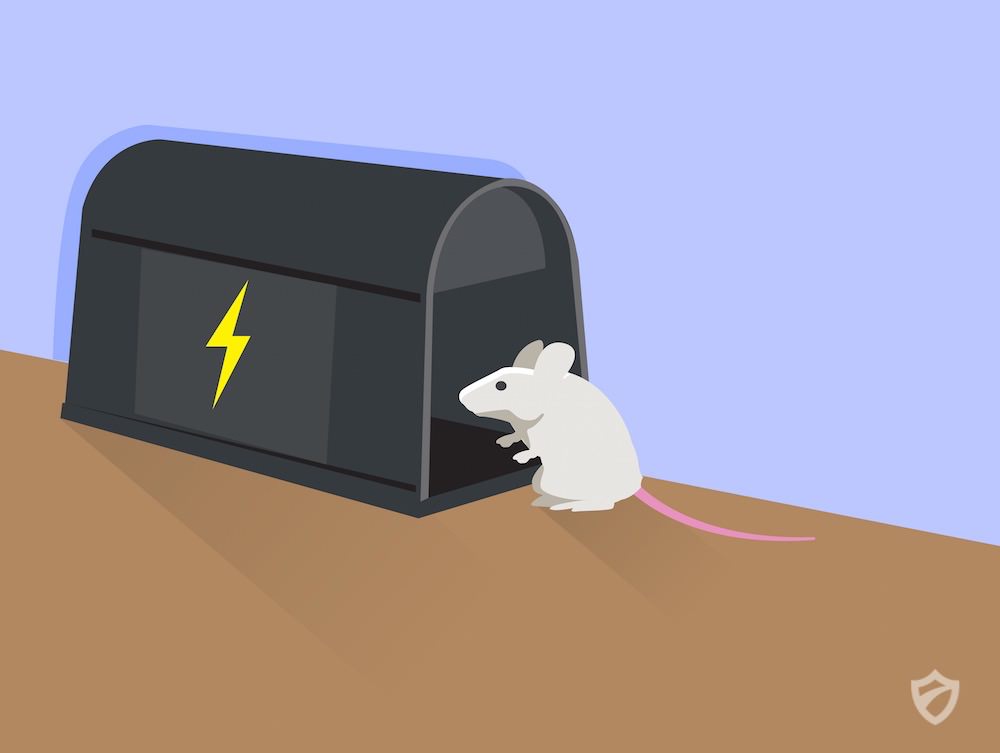
Sticky traps that use a glue the mice cannot escape. After hours of suffering the mouse will die from lack of water - not a humane option.

You can bait mouse traps with the traditional cheese, chocolate, peanut butter or even pet food.
Cat deterrents
It's common knowledge that cats make very good mouse exterminators. Cats like nothing better than chasing down a mouse for fun. If you don't have a cat consider getting one as a natural mouse deterrent. While cats are great at catching mice outside they can be less effective in the home where mice hide between floor boards, in walls and attics.
If you don't have a cat but your neighbour does then consider asking them for contents of their cat litter trays - and place it as a natural mouse deterrent around your home. The smell of the cat urine will act as a natural mouse repellent.


